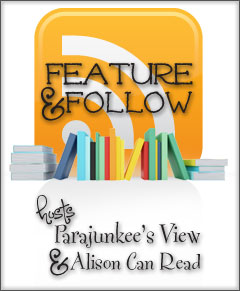It’s no big secret that I loved the first book of Jennifer Nielsen’s Ascendance Trilogy, The False Prince. So I was thrilled to finally get my hands on the sequel, The Runaway King. But would it be able to stand up to its predecessor? After all, one of my favorite things about The False Prince was the amazing twist ending, and I wasn’t sure if a sequel could hold up without a similar lightning-strike moment. Then again, if the characters and the story and the writing were still strong, did it need a twist? Maybe not.
Warning – this review will contain spoilers from The False Prince. Proceed at your own risk.
The Plot (from Goodreads)
Just weeks after Jaron has taken the throne, an assassination attempt forces him into a deadly situation. Rumors of a coming war are winding their way between the castle walls, and Jaron feels the pressure quietly mounting within Carthya. Soon, it becomes clear that deserting the kingdom may be his only hope of saving it. But the further Jaron is forced to run from his identity, the more he wonders if it is possible to go too far. Will he ever be able to return home again? Or will he have to sacrifice his own life in order to save his kingdom?
My Thoughts
The Runaway King picks up almost immediately after The False Prince ends, which is both a good and a bad thing. Good because it plunges you straight into the action (and there is quite a bit of action in this one!); bad because if you’re like me and haven’t read TFP in nearly a year, it can be a little confusing to hit the ground running without time to catch your bearings. I might have had to go brush up on the last couple chapters of TFP before continuing on. But that’s okay. You know why? Because the last couple chapters of TFP are awesome.
All the big players from TFP are back in some capacity, as friends and conspirators and spies and villains. Jaron is still the same dangerously cocky youth pulled from the streets, but with a big exception: he is now the king. And the fate of his kingdom rests on his shoulders.
As in TFP, Jaron’s narration is the main driver of the story. If he was a girl, I’d say he’s sassy. Actually, who cares. He’s sassy. He is a swaggering, secretive, sassy boy with a savior complex and trust issues. He comes brimming with strengths and shortcomings, and a lot of the time, he is his own worst enemy. His convoluted plan probably does not need to be nearly as convoluted as it is, but since he’s determined not to show his hand to anyone — even those that could help him — he sets himself up for difficulty. It can be frustrating, especially as other characters are telling him this is a fault and he’s refusing to listen — but at the same time, it’s incredibly true to the character. Everything he does makes sense to him, and that’s the most I can ask from any character in any story.
The supporting characters came and went throughout the story. Probably one of the most important was Imogen, his friend from TFP. Her moments are some of my favorites, as she is smart and strong, yet isn’t afraid to use her perceived weakness as a female to her advantage. Her friendship with Jaron isn’t fair and isn’t balanced, and really, he doesn’t deserve her. Yet she’s there anyway, and he appreciates her for it, in his own way.
The action is plentiful, and there’s never that long of a break between tussles and sword fights. Jennifer Nielsen’s depiction of the action is vivid and allowed me to play the fights out in my head like a movie, which isn’t easy. I did find a couple of the scenes toward the end a bit far-fetched, but I’m willing to suspend my disbelief a bit. The things Jaron does are not impossible — I don’t think — just improbable. I can deal with improbable.
There’s only one character motivation head-scratcher moment, and it’s toward the end. A character switches sides, and it seemed a little too easy. It wasn’t nearly as large a twist as the first book in the series, but it was still unexpected, and I’m not sure it was foreshadowed sufficiently. It’s a fine line to walk, revealing enough details to make the twist believable, without tipping your hand. I feel like this book was almost there, but not quite.
However, those minor complaints aside, I still very much enjoyed this story. It’s the kind of book and series I imagine would get kids — boys and girls alike — excited about reading. It’s clever and funny and has enough action and heart to interest a wide variety of readers, with a fabulously well-developed protagonist and intelligent plotting. Whenever the conclusion to The Ascendance Trilogy hits shelves, you can bet I’ll be at the front of the line.























